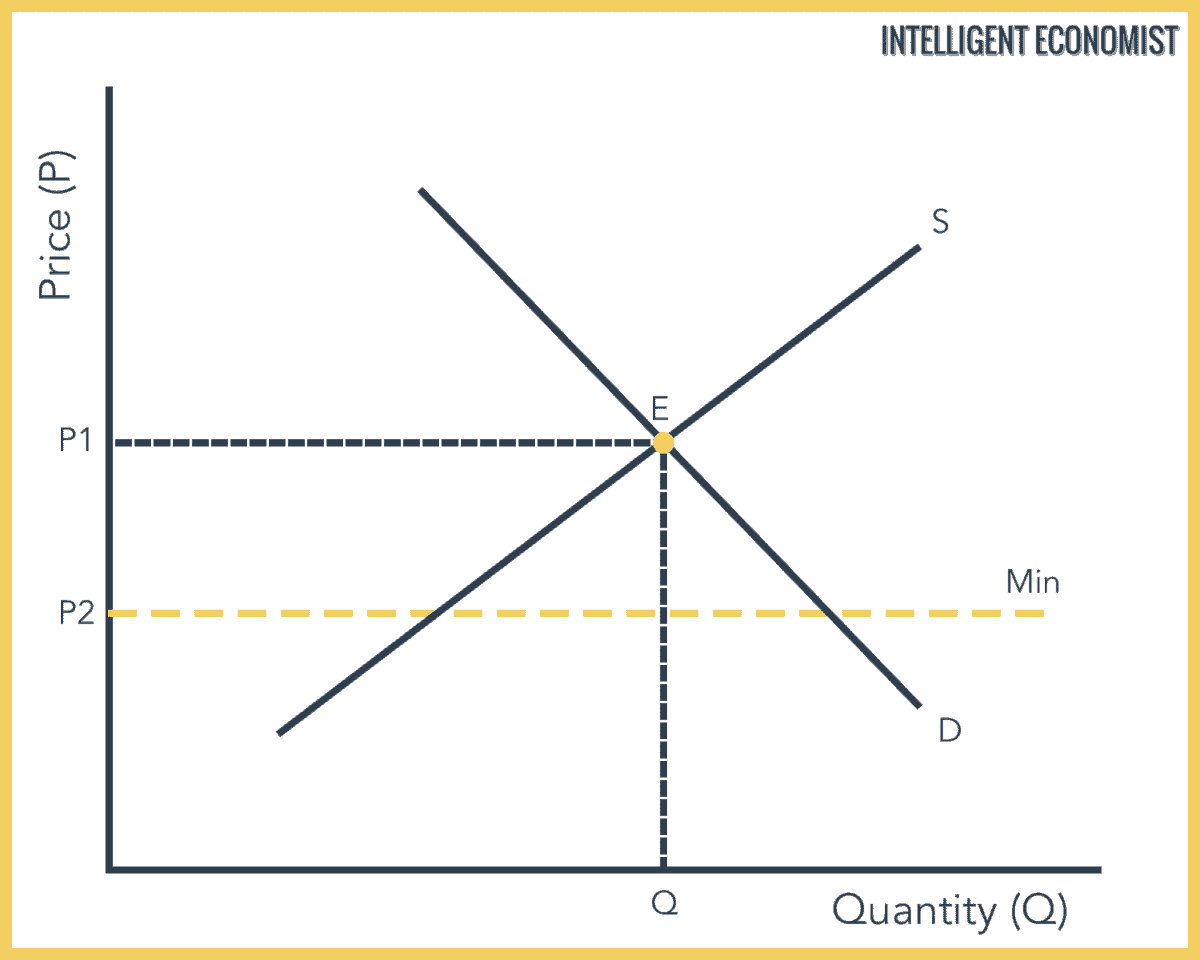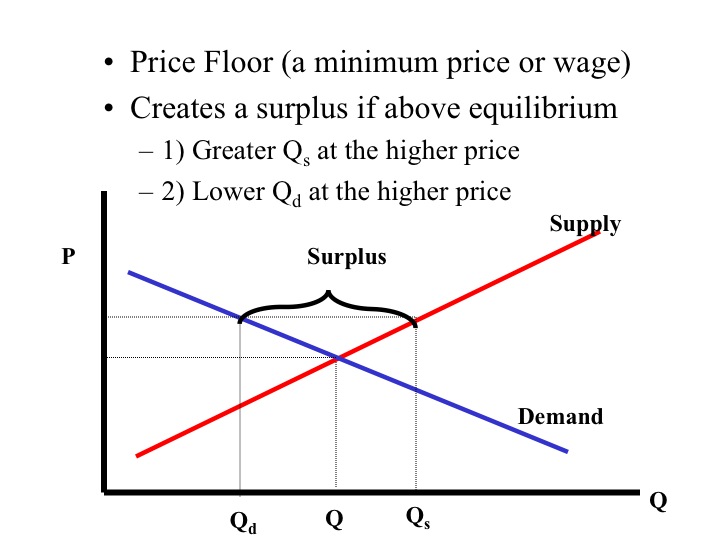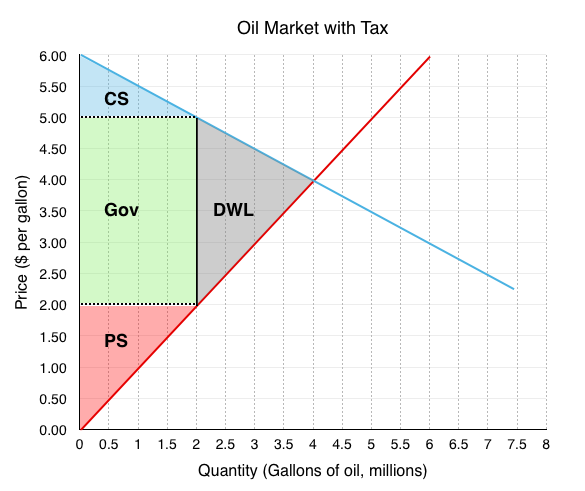A price floor is a government or group imposed price control or limit on how low a price can be charged for a product good commodity or service.
A government imposed price floor of 2 will result in.
Suppose the government sets the price of wheat at p f.
When a price floor is set above the equilibrium price quantity supplied will exceed quantity demanded and excess supply or surpluses will result.
Notice that p f is above the equilibrium price of p e.
B the price will fall to 1 because producers will be forced to incur losses.
If government imposes a price floor of 2.
A price floor is the lowest legal price a commodity can be sold at.
Price floors are also used often in agriculture to try to protect farmers.
Like price ceiling price floor is also a measure of price control imposed by the government.
The most common price floor is the minimum wage the minimum price that can be payed for labor.
Quantity demanded price per unit quantity supplied 10 5 50 20 4 40 30 3 30 40 2 20 50 1 10 a the price floor will not have an effect.
A government imposed price floor of 12 in this market results in supply curve for chocolate bars to shift up by 0 10.
When government laws regulate prices instead of letting market forces determine prices it is known as price control.
D a surplus will result equal to 20 units.
A price floor must be higher than the equilibrium price in order to be effective.
A price floor example.
Figure 4 8 price floors in wheat markets shows the market for wheat.
But this is a control or limit on how low a price can be charged for any commodity.
However a price floor set at pf holds the price above e 0 and prevents it from falling.
It is legal minimum price set by the government on particular goods and services in order to prevent producers from being paid very less price.
A price floor if set above the market equilibrium price means consumers will be forced to pay more for that good or service than they would if prices were set on free market principles.
A price floor that is set above the equilibrium price creates a surplus.
Price floors are used by the government to prevent prices from being too low.
A 0 10 tax levied on the sellers of chocolate bars will cause the.










